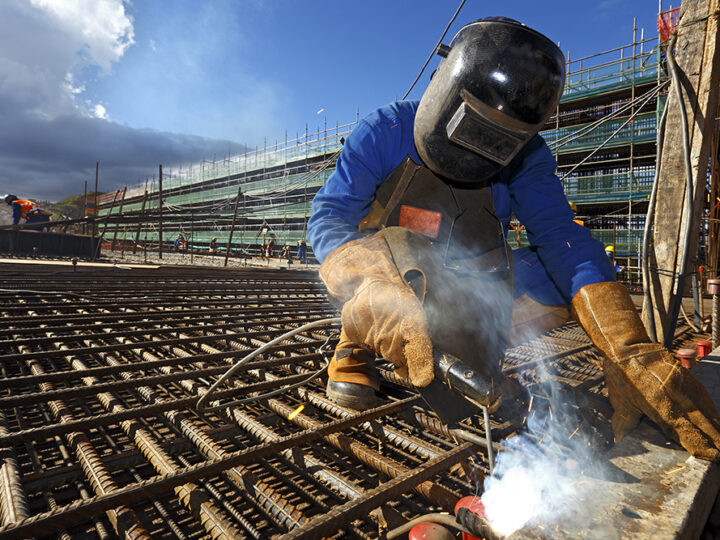
Construction Defect Statutes Outline Procedures for Litigation Against Contractors
Giovanny Avendano, Esq.
Most states have enacted notice of claim, an official intent to file a claim, for construction defects statutes. Commonly referred to as Right to Repair/Cure statutes, they establish a pre-litigation dispute resolution mechanism in certain construction defect matters that generally involve the claimant filing a notice of claim with the contractor, which often includes design professionals and engineers as defined by statute.1
Many of these state statutes are modeled after legislation drafted by the American Legislative Exchange Council.2 Thus, while the statutory details of each state vary, there are substantial similarities between the statutes.
Because these statutes are enacted primarily to reduce construction defect litigation, these statutes include key provisions regulating the pre-litigation dispute resolution procedure, which generally include:
- a requirement that the claimant must provide the contractor with written notice of the alleged construction defects before initiating an action against the contractor;
- a provision allowing the contractor to inspect the premises to evaluate the alleged defects; and
- a provision allowing the contractor to serve a written response to the claimant or other contractor providing an offer to repair, an offer of monetary compromise, or denial of claim.
In addition to key provisions outlining the pre-litigation dispute resolution procedure, construction defect statutes often contain provisions that have important legal consequences. For example, some construction defect statutes stipulate that the court or arbitrator must stay the proceeding or dismiss the action without prejudice pending compliance with pre-suit procedures.3 Some have provisions indicating that service of the written notice of construction defect tolls, or pauses the clock, on the applicable statute of limitations.4
Other construction defect statutes contain provisions that expand the pre-litigation resolution process. For example, under California and Nevada law, a release may only be obtained in exchange for monetary compensation and not for repair.5 Also under California law, a general contractor must give a subcontractor statutory notice before a claim can be filed against those subcontractors.6 Under Indiana statute, a court may award the prevailing party attorney’s fees and costs if the other party was noncompliant or acted unreasonably in the pre-litigation process.7
In summary, although the statutory details between state construction defect statutes vary in different degrees of significance, they generally contain pre-litigation procedures that create legal consequences and affect the parties’ prospects in litigation. As construction defects statutes are state specific, a design professional will need counsel to navigate the process and preserve any defenses. Therefore, if a design professional or engineer receives written notice in accordance with a state’s construction defect statute, it generally constitutes a claim under a professional liability policy. It is imperative an engineer or design professional give immediate notice to its insurer upon receipt of such statutory notification.
CITATIONS
1This is not an exhaustive list of all construction defect statutes, and the statutory details vary by jurisdiction. Please consult local counsel if you desire to know whether your state has enacted a Construction Defect or Notice of Right to Repair/Cure statute and whether it applies to your profession. See ALASKA STAT. §§ 09.45.881-899 (2018); ARIZ. REV. STAT. ANN. §§ 12-1361-1366 (LexisNexis 2018); CAL. CIV. CODE §§ 910 et seq. & 6000 et seq. (Deering 2018); COLO. REV. STAT. §§ 13-20-801 et seq. (2018); FLA. STAT. ANN. §§ 558.001 et seq. (LexisNexis 2018); GA. CODE ANN. §§ 8-2-35 et seq. (2018); HAW. REV. STAT. ANN. §§ 672E-1 et seq. (LexisNexis 2018); IDAHO CODE ANN. §§ 6-2501 et seq. (2018); IND. CODE ANN. §§ 32-27-3-1 et seq. (LexisNexis 2018); KAN. STAT. ANN. §§ 60-4701 et seq. (2018); MO. REV. STAT. §§ 436.350 et seq. (2018); MONT. CODE ANN. §§ 70-19-426 et seq. (2017); NEV. REV. STAT. ANN. §§ 40.600 et seq. (LexisNexis 2017); N.H. REV. STAT. ANN. § 359-G:1 et seq. (LexisNexis 2018); OHIO REV. CODE ANN. §§ 1312.01 et seq. (LexisNexis 2018); OR. REV. STAT. §§ 701.560 et seq. (2018); S.C. CODE ANN. §§ 40-11-500 et seq & §§ 40-59-810 et seq. (2018); S.D. CODIFIED LAWS §§ 21-1-15 et seq. (2018); TENN. CODE ANN. §§ 66-36-101 et seq. (2018); WASH. REV. CODE ANN. §§ 64.50.010 et seq. (LexisNexis 2018); and W. VA. CODE §§ 21-11A-1 et seq. (LexisNexis 2018).
2Notice and Opportunity to Repair Act, American Legislative Exchange Council (Jan. 22, 2019, 9:00 AM), https://www.alec.org/model-policy/notice-and-opportunity-to-repair-act/.
3See, e.g., FLA. STAT. ANN. §§ 558.003 (LexisNexis 2018).
4See, e.g., FLA. STAT. ANN. §§ 558.004 (LexisNexis 2018).
5See CAL. CIV. CODE §§ 929 (Deering 2018); see also NEV. REV. STAT. ANN. §§ 40.648 (LexisNexis 2017).
6See CAL. CIV. CODE § 916 (Deering 2018).
7See IND. CODE ANN. §§ 32-27-3-9 & 10 (LexisNexis 2018).






